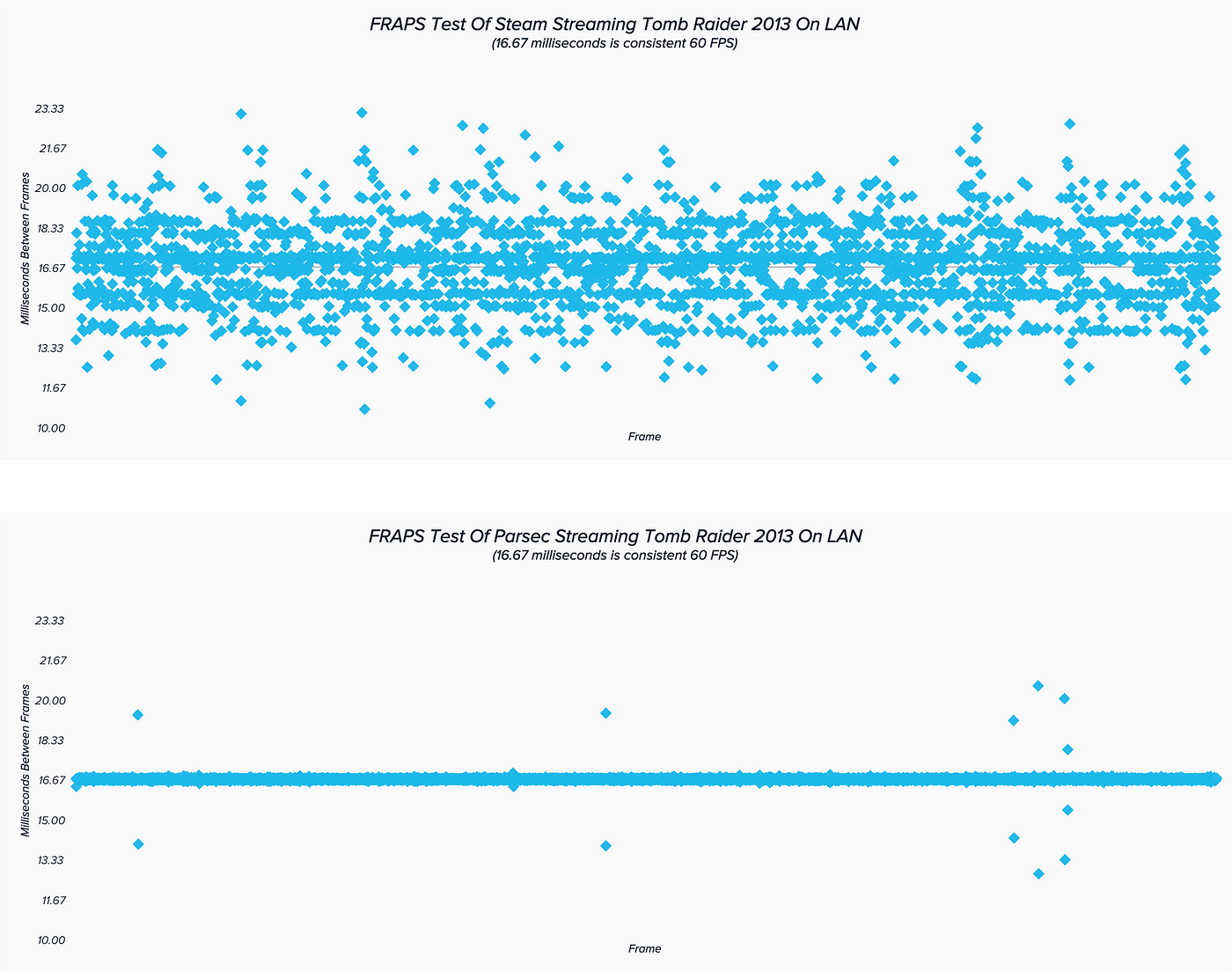Not seeing this mentioned anywhere...
Basically it's Steam "In Home Streaming" without the Steam requirement. I've only tested it on LAN between my main gaming PC and my laptop and it works great.
The added advantage is that they feel their technology is low latency enough that they market it as a piece of software that you can install on a remote computer (like an Amazon AWS instance) and use the horsepower of a remote computer to then stream to something low power (like a Raspberry Pi3) with latency that's sub 20ms (i.e. 60fps)
They go into a little detail about how they're essentially avoiding touching the CPU at every step to reduce latency in this article: https://blog.parsecgaming.com/description-of-parsec-technology-b2738dcc3842
Given that it's free it's worth trying. Download the server/client (it's one install) from their website (https://parsecgaming.com/) on your main gaming rig and set it up as a host.
Then install the same client on your laptop or low powered device. Open up the client on your low powered device and click connect. Job done.
Having tested it briefly it really is very low latency. Like indistinguishable latency on local network, and from my short experience I thought it was better than my Steam Link. Only then did I find this article (written by Parsec mind!) that basically confirms what I was seeing: https://blog.parsecgaming.com/steam-in-home-streaming-latency-test-versus-parsec-7884144b29f1
This image sums it up: Top is the framerate over time using Steam, bottom is the framerate using Parsec.

Another bonus... Adding online COOP to local COOP games: https://blog.parsecgaming.com/localcoopgamesyoucanplayonlinewithparsec-218d51126137
Yeah, so rather neat and simple remote desktop access application that does run well.
I quite fancy trying to see if I'm still capable of thrashing my friend at Nidhogg while he hosts. That would be the real test in my mind!
Basically it's Steam "In Home Streaming" without the Steam requirement. I've only tested it on LAN between my main gaming PC and my laptop and it works great.
The added advantage is that they feel their technology is low latency enough that they market it as a piece of software that you can install on a remote computer (like an Amazon AWS instance) and use the horsepower of a remote computer to then stream to something low power (like a Raspberry Pi3) with latency that's sub 20ms (i.e. 60fps)
They go into a little detail about how they're essentially avoiding touching the CPU at every step to reduce latency in this article: https://blog.parsecgaming.com/description-of-parsec-technology-b2738dcc3842
Given that it's free it's worth trying. Download the server/client (it's one install) from their website (https://parsecgaming.com/) on your main gaming rig and set it up as a host.
Then install the same client on your laptop or low powered device. Open up the client on your low powered device and click connect. Job done.
Having tested it briefly it really is very low latency. Like indistinguishable latency on local network, and from my short experience I thought it was better than my Steam Link. Only then did I find this article (written by Parsec mind!) that basically confirms what I was seeing: https://blog.parsecgaming.com/steam-in-home-streaming-latency-test-versus-parsec-7884144b29f1
This image sums it up: Top is the framerate over time using Steam, bottom is the framerate using Parsec.

Another bonus... Adding online COOP to local COOP games: https://blog.parsecgaming.com/localcoopgamesyoucanplayonlinewithparsec-218d51126137
Yeah, so rather neat and simple remote desktop access application that does run well.
I quite fancy trying to see if I'm still capable of thrashing my friend at Nidhogg while he hosts. That would be the real test in my mind!

Last edited:


 3-4 maybe though which I would expect for acceptable Netflix style 1080p quality depending on their codec?
3-4 maybe though which I would expect for acceptable Netflix style 1080p quality depending on their codec?